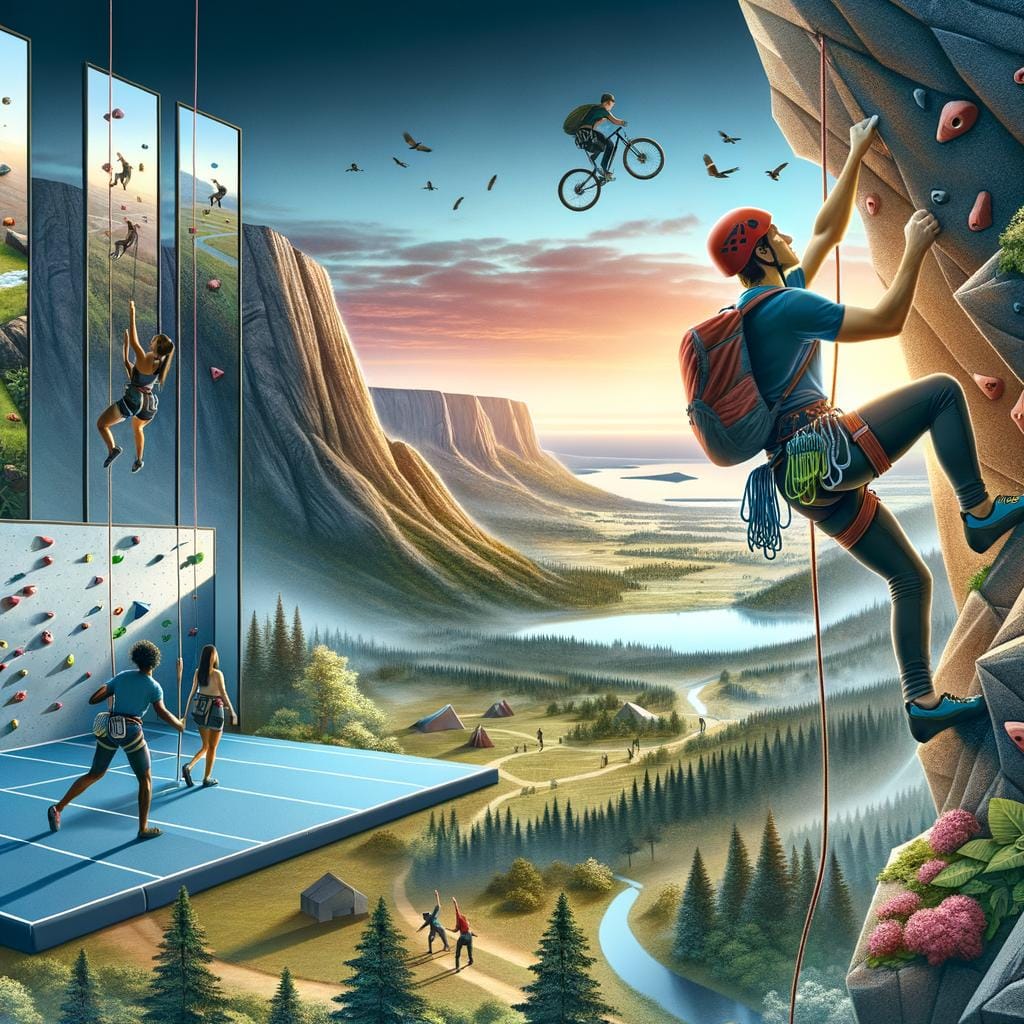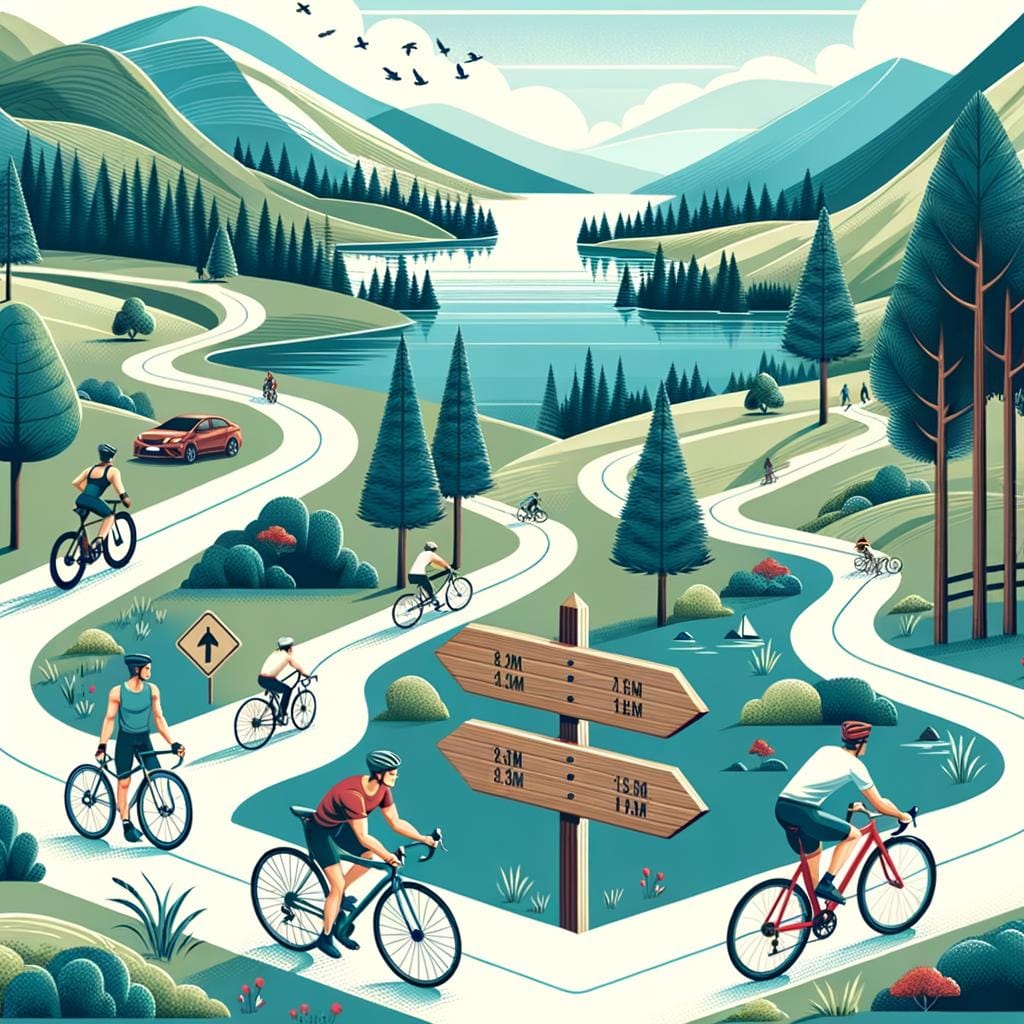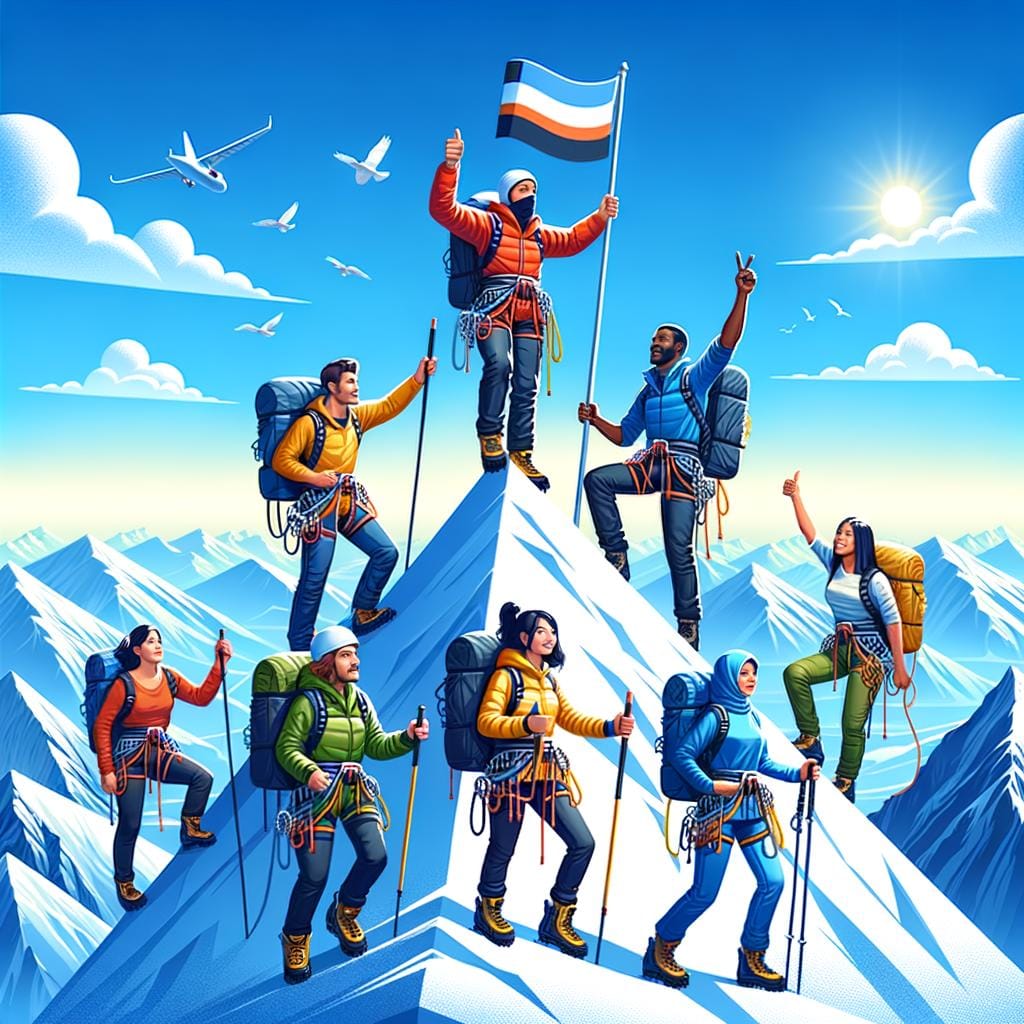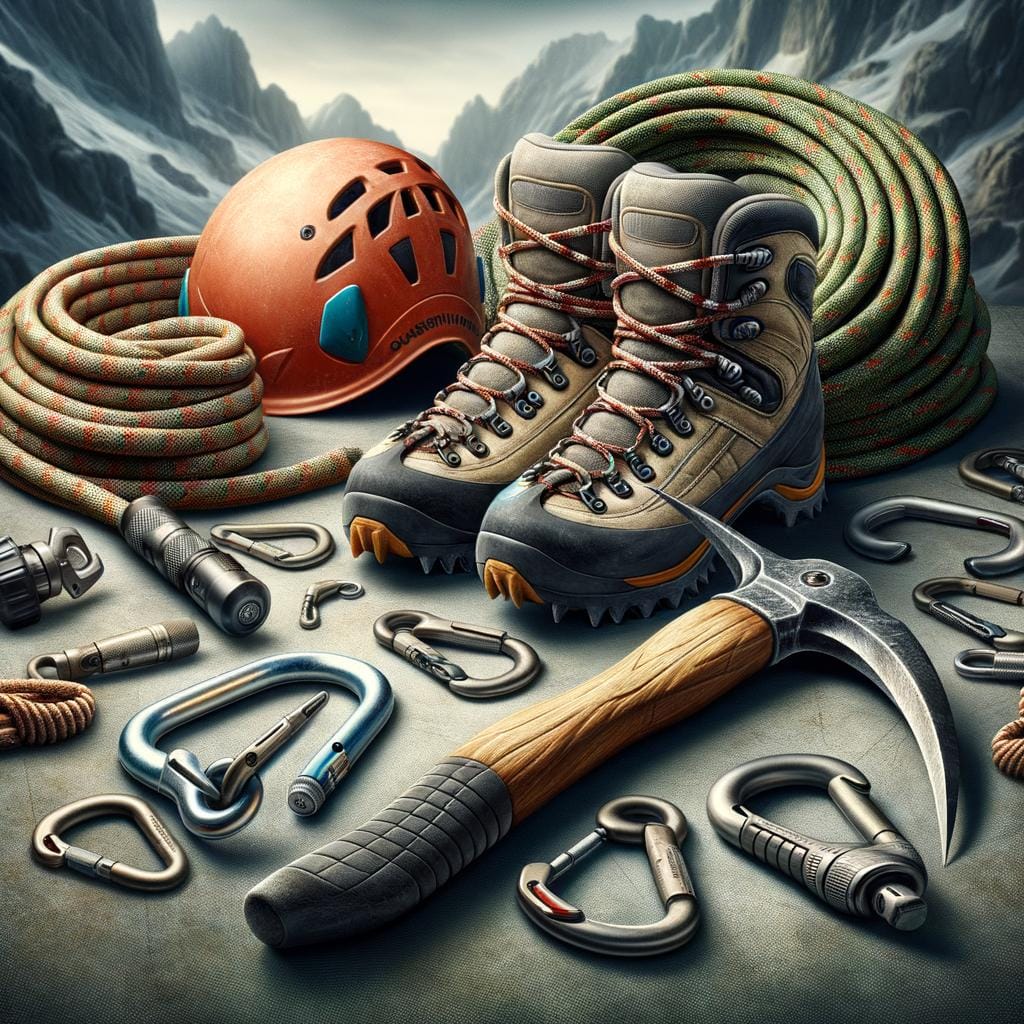Climbing Routes are the lifelines for avid climbers seeking the ultimate challenge and adventure. These designated paths on rock faces, mountains, or indoor walls offer a variety of terrains and obstacles to conquer. Whether you’re a seasoned climber looking for your next thrill or a beginner eager to learn the ropes, understanding different climbing routes is essential for a successful and safe climbing experience.
Climbing routes come in various types, each with its own set of challenges and difficulty levels. From traditional climbing to sport climbing, bouldering, and alpine climbing, each route requires specific skills, techniques, and gear. Understanding these distinctions can help climbers choose routes that align with their abilities and goals. Whether scaling vertical cliffs or navigating intricate boulder problems, climbers must adapt to the unique demands of each route.
The allure of climbing routes transcends mere physical exertion; it is also about embracing nature’s beauty and testing one’s limits. From iconic destinations like Yosemite’s El Capitan to remote peaks in the Himalayas, the world is dotted with top climbing routes that attract adventurers from across the globe.
Exploring these renowned routes not only offers a thrilling experience but also fosters a sense of community among climbers who share a passion for pushing boundaries and seeking new heights.
Different Types of Climbing Routes and Their Difficulty Levels
Sport Climbing
Sport climbing involves climbing routes with pre-placed bolts for climbers to clip their rope into for safety. The difficulty of sport climbing routes is usually determined by the spacing and positioning of these bolts, as well as the steepness of the terrain. Grades for sport climbing routes typically range from 5.5 (easiest) to 5.15 (most difficult), with different grading systems used around the world.
Traditional Climbing
Traditional climbing, also known as trad climbing, involves placing your own protective gear in cracks and crevices on the rock face as you climb. This style of climbing requires a strong knowledge of gear placement and anchor building skills. The difficulty level of trad routes is often evaluated based on the quality and availability of natural placements, as well as the overall challenge presented by the route.
Bouldering
Bouldering focuses on short, powerful sequences of moves on small rock formations known as boulders. Climbers typically use crash pads to protect themselves from falls while attempting challenging boulder problems. Difficulty in bouldering is usually graded using the V-scale, which ranges from VB (easiest) to V16+ (most difficult). Bouldering routes often emphasize technique, strength, and problem-solving skills.
These different types of climbing routes offer unique challenges and experiences for climbers of all skill levels. Whether you prefer the mental puzzle of trad climbing, the physical test of sport climbing, or the dynamic movements of bouldering, there are endless opportunities to explore new routes and push your boundaries in the world of climbing.
Essential Gear Needed for Climbing Routes
When embarking on climbing routes, having the right gear can make all the difference between a successful climb and a risky endeavor. Essential gear for climbing routes includes items like ropes, harnesses, carabiners, helmets, climbing shoes, and chalk bags. These tools not only ensure safety but also enhance performance on challenging routes.
Ropes are fundamental for climbers as they provide safety by acting as a lifeline in case of falls. There are different types of ropes suitable for various climbing scenarios such as single ropes, double ropes, and static ropes. Harnesses are worn by climbers to attach themselves to the rope system and provide support while climbing. Carabiners are essential for securing the rope to harnesses and anchoring points.
Climbing shoes are specially designed footwear that provides grip and traction on rock surfaces, allowing climbers to maneuver efficiently on difficult terrain. Chalk bags contain magnesium carbonate which helps absorb sweat from climber’s hands, improving their grip on holds and reducing the risk of slipping. Helmets are crucial for protecting climbers from falling debris or accidental impacts during a climb. Having the right gear not only enhances safety but also boosts confidence and performance on challenging climbing routes.
Top Climbing Routes Around the World
Traveling the globe in search of new and thrilling climbing routes is a dream for many climbers. From towering rock faces to challenging boulders, there are countless destinations around the world that offer a variety of experiences for climbers of all levels. Here, we explore some of the top climbing routes that have captured the hearts of enthusiasts worldwide.
Yosemite National Park, United States
One of the most iconic climbing destinations in the world, Yosemite National Park in California offers a plethora of famous climbing routes. From the legendary El Capitan to the stunning Half Dome, climbers flock to Yosemite to test their skills on some of the toughest and most rewarding routes on Earth.
Mount Everest, Nepal/Tibet
For those seeking the ultimate challenge, climbing Mount Everest is a once-in-a-lifetime experience. The world’s highest peak stands at 29,029 feet above sea level and presents a formidable challenge even to the most experienced climbers. While reaching the summit is an arduous undertaking, it remains one of the most coveted achievements in the world of mountaineering.
Karakoram Range, Pakistan/China
Home to some of the most breathtaking and challenging peaks in the world, including K2 – famously known as “The Savage Mountain,” the Karakoram Range is a haven for adrenaline junkies looking for extreme climbing adventures. With its dramatic landscapes and technical climbs, this region continues to attract climbers from around the globe who seek new challenges and unforgettable experiences.
Whether you’re a seasoned climber looking for your next big adventure or a beginner ready to take on new heights, exploring these top climbing routes around the world promises an unforgettable journey filled with excitement, awe-inspiring views, and unmatched thrills.
Guide to Rock Climbing Ethics and Safety Practices
Rock climbing is not just about reaching the top. It also involves adhering to certain ethics and safety practices to ensure a fulfilling and secure experience for all climbers. Understanding these principles is crucial for both beginners and experienced climbers alike. Here are some important guidelines to keep in mind:
- Respect the environment: Climbers should always tread lightly on the natural landscape, minimizing impact on the rocks, vegetation, and wildlife. Avoid damaging plants or disturbing animals while climbing.
- Leave no trace: Pack out all trash, do not leave any gear behind, and refrain from defacing rocks with chalk or other markings. Preserve the beauty of the climbing site for future generations of climbers.
- Communicate effectively: Clear communication between climbing partners is essential for a safe and successful climb. Establishing hand signals, using proper belay techniques, and discussing climbing plans beforehand can prevent accidents and misunderstandings.
In addition to ethical considerations, safety practices are paramount in rock climbing. Prioritizing safety not only protects yourself but also those around you. Here are some key safety tips to keep in mind while tackling different climbing routes:
- Properly inspect gear: Before starting a climb, check all equipment thoroughly to ensure it is in good condition and securely fastened as per manufacturer’s instructions.
- Always wear a helmet: Protect your head from falling debris or accidental impacts by wearing a helmet designed specifically for climbing.
- Know your limits: Be honest about your skill level and physical capabilities when selecting climbing routes. Don’t attempt advanced routes beyond your current abilities to avoid potential accidents.
By following these guidelines for both ethics and safety practices, climbers can contribute to a positive climbing community while safeguarding themselves against unnecessary risks on various climbing routes. Embracing these principles enhances the overall experience of rock climbing, making it more enjoyable and rewarding for everyone involved.
Tips for Beginners on How to Start Climbing Routes
Climbing routes can be a thrilling and adventurous way to explore the great outdoors while challenging yourself physically and mentally. If you are a beginner looking to start climbing routes, there are some essential tips to keep in mind to ensure a safe and enjoyable experience.
First and foremost, it is highly recommended for beginners to take a climbing course or hire a certified guide to learn the basics of climbing techniques, safety practices, and equipment handling. This will provide you with the necessary knowledge and skills to start climbing routes confidently and safely. Additionally, joining a climbing gym can help you practice your skills in a controlled environment before venturing out to outdoor climbing areas.
Understanding the different types of climbing routes is crucial for beginners. From traditional routes that require placing your own protective gear (trad climbing) to sport routes that have pre-placed bolts for protection, each type offers its own unique challenges.
It is important to start with easy routes suitable for beginners and gradually progress to more difficult climbs as you gain experience and confidence on the rock. Familiarizing yourself with route ratings, such as the Yosemite Decimal System (YDS), can also help you gauge the difficulty level of climbs.
| Tips for Beginners | How to Start Climbing Routes |
|---|---|
| Take a climbing course or hire a guide | Learn basics of techniques, safety practices, and equipment handling |
| Join a climbing gym | Practice skills in controlled environment before outdoor climbs |
| Understand different types of climbs | Start with easy routes suitable for beginners |
In addition to technical skills, mental preparedness is crucial when starting climbing routes as it involves facing fears, problem-solving on the rock, and making quick decisions under pressure. Developing mental strength through practice, experience, and positive mindset can greatly enhance your climbing performance and overall enjoyment of the sport. Remember that climbing is not just about physical strength but also mental resilience and focus.
Lastly, finding a supportive community of climbers can offer valuable guidance, encouragement, and camaraderie as you embark on your climbing journey. Whether through local climbing clubs, online forums, or group meetups at popular crags, connecting with other climbers can deepen your passion for the sport and open up opportunities for learning from experienced climbers. With dedication, patience, and perseverance, beginners can progress from indoor gyms to outdoor crags confidently while exploring new heights on diverse climbing routes around the world.
Interviews With Experienced Climbers About Their Favorite Climbing Routes
Climbing enthusiasts often seek out unique and challenging routes to satisfy their craving for adventure and adrenaline. To gain insights into some of the most thrilling climbing routes around the world, we reached out to experienced climbers for their personal recommendations. Here are some of their favorite climbing routes:
- El Capitan in Yosemite National Park, California, USA – Known for its iconic sheer granite rock face, El Capitan offers a variety of climbing routes catering to different skill levels. The “Nose” route is a popular choice among seasoned climbers due to its technical challenges and breathtaking views.
- Cerro Torre in Patagonia, Argentina – Considered one of the most difficult peaks to climb in the world, Cerro Torre attracts fearless climbers seeking an ultimate test of skill and endurance. The “Compressor Route” is infamous for its steep ice faces and unpredictable weather conditions.
- Matterhorn in the Swiss Alps – With its distinctive pyramid shape and exposed ridges, Matterhorn is a classic choice for alpine climbers looking for a mix of rock and ice challenges. The “Hornli Ridge” route offers a thrilling ascent with stunning views of the surrounding landscapes.
For these experienced climbers, embarking on these challenging routes is not just about conquering nature’s obstacles but also about experiencing a profound sense of accomplishment and connection with the outdoors. Each climb presents its own unique set of challenges and rewards, making it an unforgettable journey for those who dare to push their limits.
Ultimately, climbing routes provide more than just physical challenges – they offer an opportunity for personal growth, self-discovery, and exploration of some of Mother Nature’s most awe-inspiring wonders. For those willing to take on the challenge, each route becomes a story waiting to be written, filled with triumphs, setbacks, and moments of pure exhilaration that can only be experienced when reaching new heights both literally and figuratively.
The Future of Climbing Routes
The climbing industry has been experiencing significant growth over the years, with more people seeking adventure and thrill in the great outdoors. As technology continues to advance, new trends and innovations are emerging in the world of climbing routes.
One of the key trends that have been gaining momentum is the use of virtual reality (VR) technology to simulate climbing experiences. Climbers can now train indoors using VR simulations of famous outdoor climbing routes, enhancing their skills and familiarizing themselves with different terrains before attempting the real thing.
Another notable trend in the climbing industry is sustainability and eco-consciousness. With increasing awareness of environmental issues, climbers and climbing route setters are focusing on developing sustainable practices to minimize their ecological impact. This includes strategies such as using biodegradable materials for gear, promoting Leave No Trace principles, and participating in conservation efforts to protect natural climbing areas. Additionally, there is a growing movement towards creating eco-friendly climbing gyms that utilize recycled materials and energy-efficient practices.
In terms of innovations, advanced gear technology is revolutionizing the way climbers approach routes. From lightweight, durable equipment to cutting-edge safety devices, gear manufacturers are constantly pushing boundaries to enhance performance and safety for climbers.
For example, the development of smart belay devices with assisted braking features has significantly improved climber safety by reducing the risk of human error. As technology continues to evolve, we can expect further innovations that will shape the future of climbing routes and make this exhilarating sport even more accessible and enjoyable for enthusiasts around the world.
| Trends | Innovations |
|---|---|
| Virtual Reality (VR) training simulations | Smart belay devices with assisted braking features |
| Sustainability and eco-conscious practices | Development of lightweight, durable gear |
Conclusion
In conclusion, climbing routes offer a unique and exhilarating experience for outdoor enthusiasts and adventure seekers. From the challenging bouldering routes to the towering multi-pitch climbs, each type presents its own set of obstacles and rewards. The variety of climbing routes available around the world cater to different skill levels, allowing climbers to continuously challenge themselves and grow in their abilities.
Having the essential gear is crucial for a safe and enjoyable climbing experience. From ropes and harnesses to helmets and carabiners, having the right equipment can make all the difference in ensuring a successful climb. Additionally, following rock climbing ethics and safety practices is paramount to not only protect oneself but also preserve the natural environment for future generations of climbers to enjoy.
As trends and innovations continue to shape the climbing industry, we can expect to see more diverse and exciting climbing routes being developed. Whether it’s new techniques, sustainable practices, or advancements in gear technology, the future of climbing routes holds endless possibilities for climbers around the globe. So grab your gear, find your next challenge, and embark on an unforgettable journey up some of the most breathtaking climbing routes nature has to offer.
Frequently Asked Questions
What Is a Bouldering Route Called?
A bouldering route is typically called a “boulder problem” in the climbing community. These problems are like puzzles that climbers have to figure out using their strength, technique, and problem-solving skills.
How Do Climbing Gyms Set Routes?
Climbing gyms set routes by carefully placing different color-coded holds on the walls to create unique challenges for climbers. The route setters consider factors like difficulty level, angles, and movement to design routes that cater to all skill levels.
What Does v Stand for in Climbing?
In climbing, the “V” stands for “Vermin” rating system used to grade bouldering problems based on difficulty. The V-scale ranges from V0 (easiest) to V16 (most challenging), helping climbers understand the level of challenge they are about to face on a particular boulder problem.

An avid outdoor enthusiast, writer, and environmental advocate who has spent over two decades exploring the world’s most breathtaking landscapes. With a background in environmental science and a passion for adventure, Frances combines her love for nature with her talent for storytelling to inspire others to embark on their own outdoor journeys.





